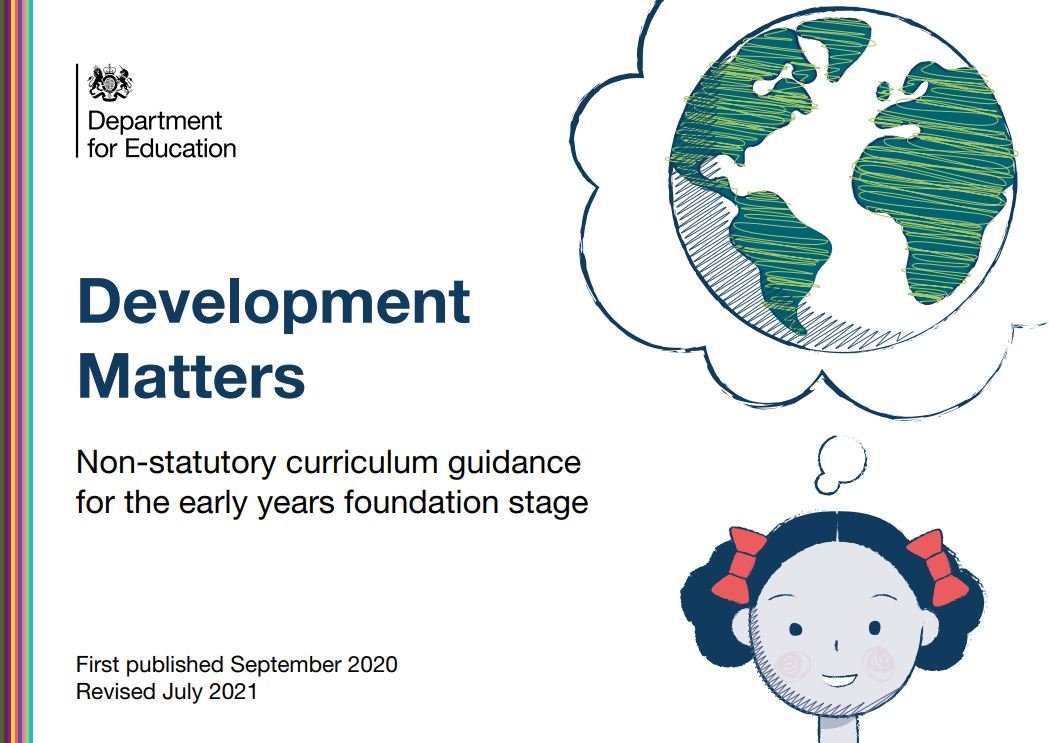Settling In Your Child
Take up the opportunity to visit the pre-school before your child starts. This will help you to make an informed choice. Read through any literature or handbooks that are available. If your child is 2 they will be offered 1 free visit. You and your child will stay for this session to help you became familiar with the routines, meet the staff and to ask any questions. Your child may be excited at the prospect of joining the pre-school and be happy for you to leave. Encourage this of course, but never forget to say goodbye. If your child is not happy to be left then speak to the Supervisor or key person who will devise a strategy that will help both of you to make this transition easier. (Remember the staff are trained to deal with distressed children; most have also been there themselves at some time.)
Allowing your child to bring along a favourite item such as a teddy, having something that your child is familiar with may help them to settle.
Early Years Foundation Stage (EYFS)
The Pre- School follows a long-term plan for the children’s pre-school education. This reflects the objectives of the Early Years Foundation Stage framework which supports and guides staff to care and educate children from birth to six years. The pre-school adapts its curriculum to carefully meet the needs of individual children.
1.Muddy Puddles operates along with the Government's mandated EYFS statutory framework 2021 - a PDF of which, can be found here.
2.DEVElopment matters -Non statutory curriculum - This link shows the curriculum we refer to in our observations - here
The prime areas
communication and language
Listening and attention:
children listen attentively in a range of situations. They listen
to stories, accurately anticipating key events and respond to what they hear with
relevant comments, questions or actions. They give their attention to what others say
and respond appropriately, while engaged in another activity.
Understanding:
children follow instructions involving several ideas or actions. They
answer ‘how’ and ‘why’ questions about their experiences and in response to stories or
events.
Speaking:
children express themselves effectively, showing awareness of listeners’
needs. They use past, present and future forms accurately when talking about events
that have happened or are to happen in the future. They develop their own narratives
and explanations by connecting ideas or events.
physical development
Moving and handling:
children show good control and co-ordination in large and small
movements. They move confidently in a range of ways, safely negotiating space. They
handle equipment and tools effectively, including pencils for writing.
Health and self-care: children know the importance for good health of physical
exercise, and a healthy diet, and talk about ways to keep healthy and safe. They
manage their own basic hygiene and personal needs successfully, including dressing
and going to the toilet independently.
personal, social and emotional development
Self-confidence and self-awareness:
children are confident to try new activities, and
say why they like some activities more than others. They are confident to speak in a
familiar group, will talk about their ideas, and will choose the resources they need for
their chosen activities. They say when they do or don’t need help.
Managing feelings and behaviour:
children talk about how they and others show
feelings, talk about their own and others’ behaviour, and its consequences, and know
that some behaviour is unacceptable. They work as part of a group or class, and
understand and follow the rules. They adjust their behaviour to different situations, and
take changes of routine in their stride.
Making relationships:
children play co-operatively, taking turns with others. They take
account of one another’s ideas about how to organise their activity. They show
sensitivity to others’ needs and feelings, and form positive relationships with adults and
other children.
The specific areas
literacy
Reading:
children read and understand simple sentences. They use phonic knowledge
to decode regular words and read them aloud accurately. They also read some
common irregular words. They demonstrate understanding when talking with others
about what they have read.
Writing:
children use their phonic knowledge to write words in ways which match their
spoken sounds. They also write some irregular common words. They write simple
sentences which can be read by themselves and others. Some words are spelt
correctly and others are phonetically plausible.
mathematics
Numbers:
children count reliably with numbers from 1 to 20, place them in order and
say which number is one more or one less than a given number. Using quantities and
objects, they add and subtract two single-digit numbers and count on or back to find the
answer. They solve problems, including doubling, halving and sharing.
Shape, space and measures:
children use everyday language to talk about size,
weight, capacity, position, distance, time and money to compare quantities and objects
and to solve problems. They recognise, create and describe patterns. They explore
characteristics of everyday objects and shapes and use mathematical language to
describe them.
understanding the world
People and communities:
children talk about past and present events in their own
lives and in the lives of family members. They know that other children don’t always
enjoy the same things, and are sensitive to this. They know about similarities and
differences between themselves and others, and among families, communities and
traditions.
The world:
children know about similarities and differences in relation to places,
objects, materials and living things. They talk about the features of their own immediate
environment and how environments might vary from one another. They make
observations of animals and plants and explain why some things occur, and talk about
changes.
Technology:
children recognise that a range of technology is used in places such as
homes and schools. They select and use technology for particular purposes.
expressive arts and design
Exploring and using media and materials:
children sing songs, make music and
dance, and experiment with ways of changing them. They safely use and explore a
variety of materials, tools and techniques, experimenting with colour, design, texture,
form and function.
Being imaginative:
children use what they have learnt about media and materials in
original ways, thinking about uses and purposes. They represent their own ideas,
thoughts and feelings through design and technology, art, music, dance, role-play and
stories.

